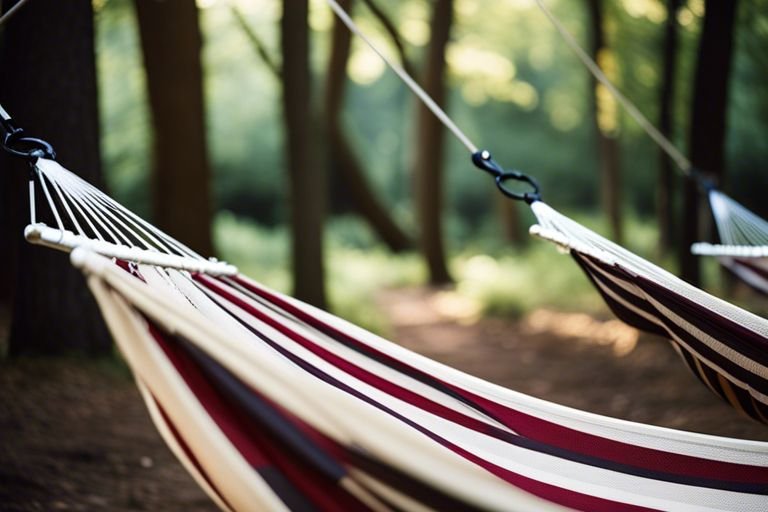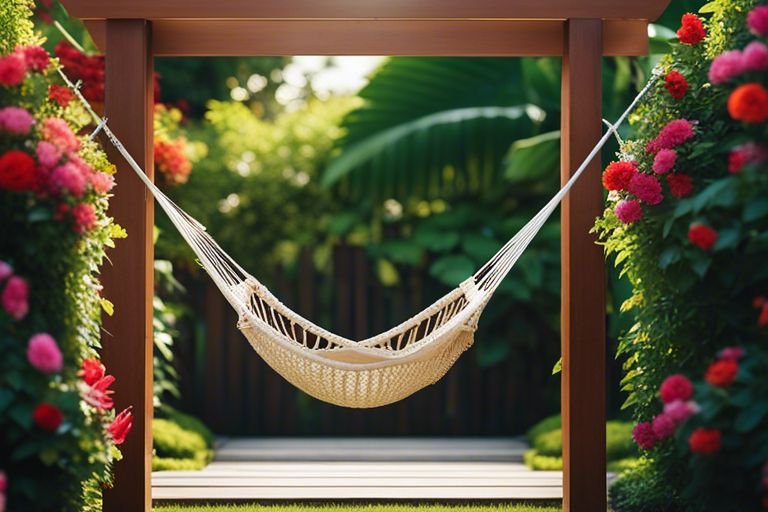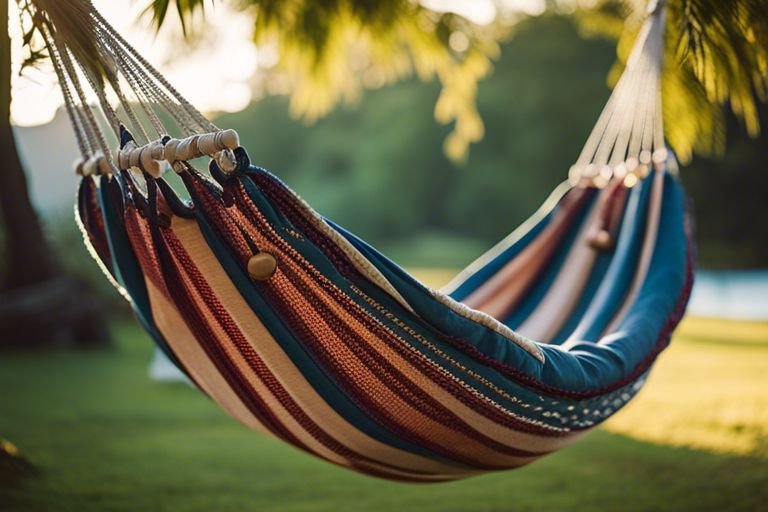Hammocks offer a serene escape into nature’s embrace, but are they harming the very trees that cradle them? In this informative guide inspired by the environmental wisdom of Aldo Leopold, we explore the dangers of improper hammock use and provide important tips for minimizing impact.
Learn how to hang your hammock responsibly, choose the right trees, and embrace Leave No Trace principles for sustainable relaxation. Join us on a journey towards harmonious hammock adventures and a deepened connection with the natural world.
Key Takeaways:
- Use wide, padded straps: Invest in straps designed for hammocks to distribute weight evenly and prevent damage to tree bark.
- Choose sturdy trees: Select mature trees with thick bark and healthy branches to support your hammock safely.
- Follow Leave No Trace principles: Minimize impact by using established campsites and avoiding wrapping straps directly around tree trunks.
- Be mindful of long-term effects: While research is ongoing, practicing responsible hammock use helps protect the health of forests.
- Educate yourself: Learn more about sustainable outdoor practices and eco-friendly choices to ensure future generations can enjoy nature.
The Harmful Truth About Hammocks and Trees

Improper Hanging Damages Tree’s Cambium Layer
For hammock enthusiasts, it may come as a surprise that improper hanging techniques can actually harm trees. When thin ropes or straps are used to suspend hammocks, they can dig into a tree’s bark and potentially injure the delicate cambium layer beneath.
This crucial growth tissue is responsible for transporting nutrients and water throughout the tree. Damage to the cambium layer can lead to stunted growth, weakened trees, and increased vulnerability to disease.
The Consequences of Ignoring Responsible Hammock Use
To truly understand the importance of responsible hammock use, one must consider the potential consequences of ignoring proper hanging techniques. Trees are vital to our ecosystem, providing oxygen, shade, and habitat for countless species.
When trees are damaged by improper hammock hanging, their ability to thrive and support the environment is compromised. It’s not just about the individual tree; it’s about the interconnected web of life that relies on healthy trees for survival.
Trees are more than just silent spectators in the wilderness. They are living beings, intricately connected to the ecosystem around them. By taking a few simple steps to ensure your hammock doesn’t harm the trees, you are not only protecting their health but also preserving the natural beauty and balance of our precious forests.
Choosing the Right Tree
Selecting Mature, Thick-Barked Trees
One of the most important considerations when hanging your hammock is selecting mature, thick-barked trees. Look for trees with sturdy branches and healthy bark that can handle the weight of your hammock comfortably.
Choosing the right trees can help minimize the risk of damage to the tree’s bark and cambium layer, ensuring a relaxing and sustainable outdoor experience.
Avoiding Young, Thin-Barked, or Diseased Trees
For hammock enthusiasts, it’s crucial to avoid hanging your hammock on young, thin-barked, or diseased trees. These trees are more susceptible to damage from hammock straps, which can dig into the bark and potentially harm the tree’s cambium layer.
Avoiding trees that are already stressed or weakened can help protect their long-term health and ensure that you can continue to enjoy the beauty of nature in a responsible way.
When choosing trees for your hammock, avoid those with thin bark that are more easily damaged. Additionally, steer clear of trees that show signs of disease or distress, as they may not be able to withstand the weight of a hammock and could be further harmed by its use.
By being mindful of the trees you select for your outdoor relaxation spot, you can help protect the forest ecosystem and contribute to sustainable hammock enjoyment.
Proper Hammock Hanging Techniques

Using Wide, Padded Straps for Hanging
Your hammock experience starts even before you take that blissful first sway. When hanging your hammock, remember that the type of straps you use can make a world of difference.
Instead of thin ropes that can harm trees, opt for wide, padded straps designed specifically for hammock hanging. These straps distribute your weight more evenly, reducing pressure on the tree’s bark and protecting the delicate cambium layer beneath.
Avoiding Wrapping Straps Around the Trunk
Any avid hammocker knows the importance of finding the perfect trees for hanging your hammock. But once you’ve found those sturdy trunks, it’s crucial to set up your hammock responsibly.
Avoid wrapping straps directly around the tree trunk, as this can cause damage to the bark, impacting the tree’s health and growth. Instead, opt for a secure suspension system that minimizes contact with the tree’s trunk while still providing a safe and comfortable hang.
Hanging your hammock with care and consideration for the trees will ensure a peaceful and sustainable experience. By following these proper hanging techniques, you can enjoy your hammock moments knowing you’re minimizing your impact on the environment and protecting the beauty of nature for generations to come.
Leave No Trace Principles for Hammock Users
All hammock users should adhere to Leave No Trace principles to minimize their impact on the tree and surrounding environment while enjoying the great outdoors.
Minimizing Impact on the Tree and Surrounding Environment
Impact: When hanging your hammock, avoid wrapping straps directly around the tree trunk and opt for a secure suspension system that minimizes contact with the bark.
This protects the tree from damage and helps preserve the overall health of the surrounding ecosystem by reducing stress on the tree and preventing soil compaction.
Respecting the Natural Habitat and Wildlife
For: Respecting the natural habitat and wildlife is vital when using a hammock outdoors. Be mindful of the creatures that call the trees home and avoid disturbing nesting birds or other wildlife. By choosing designated hammock areas or established campsites, you can minimize your impact on the delicate balance of the natural environment.
Another important aspect of responsible hammock use is to avoid leaving any trace of your presence behind. Pick up all trash, avoid damaging vegetation, and be aware of your surroundings to ensure that you are not disrupting the natural habitat around you. By following these guidelines, hammock users can enjoy their outdoor adventures while protecting the environment for future generations.
Education and Awareness
The Importance of Responsible Hammock Use Education
Now, let’s examine the importance of educating ourselves and others about responsible hammock use. Understanding the potential impact of improperly hanging hammocks on trees is the first step toward making informed choices.
With knowledge comes the power to ensure our outdoor relaxation doesn’t harm the nature we seek to connect with. By learning about the proper techniques and equipment needed to hang hammocks sustainably, we can all contribute to the health and well-being of our forests.
Spreading Awareness About Eco-Friendly Outdoor Choices
Spreading awareness about eco-friendly outdoor choices is key to fostering a culture of responsible outdoor recreation. By sharing our knowledge and experiences with others, we can inspire a community dedicated to preserving the natural world. Encouraging friends, family, and fellow outdoor enthusiasts to prioritize sustainable practices when using hammocks can have a ripple effect, leading to a collective effort to protect our environment.
EcoFriendly: Embracing eco-friendly outdoor choices not only benefits the environment but also enhances our overall outdoor experience. By choosing sustainable hammock hanging methods and spreading awareness about responsible practices, we can ensure that the beauty of nature remains intact for generations to come.
Committing to Eco-Friendly Outdoor Choices

Many outdoor enthusiasts are now exploring alternative hammock options and accessories to minimize their impact on trees. Exploring hammock suspension systems that use wide, padded straps instead of thin ropes can help distribute weight more evenly and reduce pressure on tree bark.
Additionally, choosing established campsites or designated hammock areas, and avoiding wrapping straps directly around tree trunks, can further protect the trees.
Supporting Sustainable Outdoor Gear and Practices
An alternative way to commit to eco-friendly outdoor choices is by supporting sustainable outdoor gear and practices. Look for companies that prioritize environmentally conscious manufacturing processes and materials. By investing in high-quality, durable products that are designed to minimize harm to nature, you can enjoy your outdoor adventures with peace of mind.
It’s vital to be mindful of the impact our recreation activities have on the environment. By choosing sustainable options and embracing responsible practices, we can ensure that our love for the outdoors does not harm the very trees and landscapes we cherish.
Final Words
Taking this into account, it becomes clear that hammocks themselves aren’t the culprits when it comes to potential harm to trees. It’s the way we use them that makes all the difference.
By following the advice shared in this guide, such as using wide, padded straps and selecting suitable trees, we can enjoy the relaxation of a hammock without causing harm to the majestic trees that provide us with shade and serenity.
As we strive to connect with nature and unwind in the great outdoors, let’s do so responsibly. By adhering to Leave No Trace principles and making mindful choices in our hammock usage, we can minimize our environmental impact.
And remember, if you’re curious about why some cities are banning hammocks, check out Here’s Why Some Cities Are Banning Hammocks for more insight. Let’s embrace sustainable practices and ensure that our hammock-induced relaxation doesn’t come at the cost of harming the trees that make it all possible.
FAQs
Q: Are hammocks bad for trees?
A: Hammocks themselves aren’t inherently harmful to trees. However, improper hanging techniques can cause damage. Thin ropes or straps can dig into a tree’s bark, potentially injuring the delicate cambium layer beneath and making the tree more susceptible to disease.
Q: How can I enjoy a hammock without harming trees?
A: To enjoy your hammock responsibly, invest in wide, padded straps designed specifically for hanging hammocks. These distribute weight more evenly, minimizing pressure on the tree’s bark. Choose sturdy, mature trees with thick bark and healthy branches that can support your weight comfortably.
Q: What are some tips for responsible hammock use?
A: Follow Leave No Trace principles by choosing established campsites or designated hammock areas when hanging your hammock. Avoid wrapping straps directly around the tree trunk and opt for secure suspension systems that minimize contact with the bark. By being mindful of your impact, you can enjoy the outdoors responsibly and protect the health of our precious forests.






